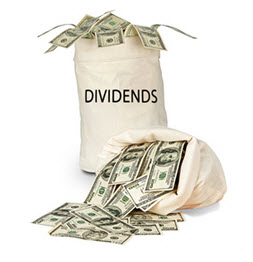 Generally speaking, the companies known for their large and regular dividend payments are well-established companies that makes a profit throughout the ups and downs of economic cycles. Dividend payments are unusual with newly formed companies, companies that are struggling to make a profit and companies that are using most of their available assets to expand, or to invest in R&D.
Generally speaking, the companies known for their large and regular dividend payments are well-established companies that makes a profit throughout the ups and downs of economic cycles. Dividend payments are unusual with newly formed companies, companies that are struggling to make a profit and companies that are using most of their available assets to expand, or to invest in R&D.
If you are wish to put together an investment portfolio with the aim of receiving big dividend payments every year, a good place to start looking for suitable candidates are among mature companies with a long track-record of dividend payments. It is also worth knowing that certain industries and sectors are famous for containing plenty of good dividend payers. Here are a few suggestions:
| Oil & Gas | Pharmaceuticals | Real estate | Bank & Financial |
| Basic materials | Healthcare | Utilities |
Dividend reinvestment program (DRIP)
Enrolling in a Dividend Reinvestment Program (DRIP) is a convenient way of becoming the owner of more and more shares in a dividend paying stock company. When you are enrolled, any cash dividends to you will automatically be used to purchase shares in the company.
In some jurisdictions, there are tax advantages to be had for shareholders that use a DRIP as opposed to shareholders who first receive the dividend as cash and then use that cash to purchase shares.
DRIPs are especially popular among investors who are putting together a dividend portfolio with the aim of living off the dividend payments in the future. You may for instance be planning for your retirement or to finally take that long-lasting trip around the world. Since you don’t need the dividend payments to support your spending right now, it makes sense to reinvest them and let them help you build and even bigger portfolio for the future.

Diversify
When you put together your dividend portfolio, a good rule of thumb is to include stocks from at least two dozen companies. You might not be able to buy all of them at the same time (good dividend paying shares are usually not inexpensive) but you should still strive to gradually build a suitably diversified dividend stock portfolio.
Be especially vigilant against falling into the trap of buying all your shares from the same industry. You might feel like you have diversified since you own stock in 30 different companies, but if 27 of those companies belong to the oil & gas industry you are still very vulnerable.
Stability is more important than quick growth
Investing in rapidly growing and expanding companies can be exiting, but when you are putting together a dividend portfolio you will probably be better served by looking at stable companies instead of shooting stars.
Many excellent dividend-paying companies are very big and this can lead us astray when we try to interpret their growth numbers.
Exampel:
- Company A has 100 stores. When they open up 25 more stores, this is a 25% growth.
- Company B has 1,000 stores. When they open up 50 more stores, this is just a 5% growth.
Company B opened up twice as many new stores as Company A, but if we look at the growth percentage only we might not realize this.
Look for companies with wiggle room
A company making big dividend payments is of course appealing, but how large are they in relation to company earnings? A company that makes a more modest payouts – in relation to its earnings – can retain more assets within the company and use them as a buffer against hard times or to make suitable expansions. This can in turn increase the long-term survive-ability of the company.
As a rule of thumb, be extra watchful with companies where the dividend payout ratio (dividends as a percentage of earnings) is above 60%. Depending on the circumstances, they might not be giving themselves enough wiggle room.
S&P 500 Dividend Aristocrats
The list ”S&P 500 Dividend Aristocrats” is a good starting point if you’re looking for U.S. companies that have been able to continuously increase their dividends year by year during the last 25 years. (The list is limited to S&P 500 companies.)
This article was last updated on: December 21, 2016
